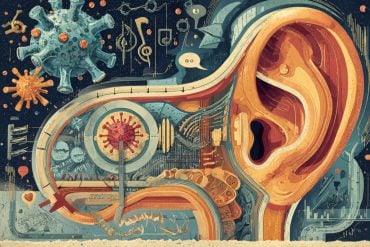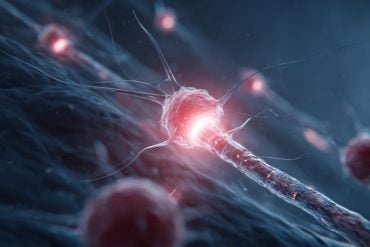Summary: A new study uncovers a unique relationship between inflammatory proteins and adolescent depression.
The study, part of the IDEA project, distinguishes how different cytokines are related to depression in boys and girls. While boys displayed elevated interleukin-2 (IL-2) levels with increased depression risk and severity, girls had higher interleukin-6 (IL-6) levels linked to depression severity.
This groundbreaking discovery highlights the importance of personalized treatments based on biological sex.
Key Facts:
- Researchers from King’s College London have established a differentiation in the inflammatory proteins connected to depression between boys and girls in adolescence.
- Elevated interleukin-2 (IL-2) levels were correlated with increased depression risk and severity in boys, but not girls. In contrast, girls presented higher interleukin-6 (IL-6) levels linked to depression.
- The study forms part of the Identifying Depression Early in Adolescence (IDEA) project, aimed at understanding the onset of depression in youth globally.
Source: King’s College London
New research led by the Institute of Psychiatry, Psychology & Neuroscience (IoPPN) at King’s College London has found that depression and the risk of depression are linked to different inflammatory proteins in boys and girls.
When inflammation occurs in the body a host of proteins are released into the blood called cytokines. Previous research has shown that higher levels of cytokines are associated with depression in adults, but little is known about this relationship in adolescence.
Researchers investigated sex-differences in the relationship between inflammatory proteins and depression.

Published in the Journal of Affective Disorders, the study found that different cytokines were implicated in depression risk and severity in boys compared to girls. The research was part of the IDEA (Identifying Depression Early in Adolescence) project funded by MQ Mental Health Research.
To assess inflammation, researchers measured the blood cytokine levels in 75 adolescent boys and 75 adolescent girls (aged 14-16 years) from Brazil. The 150 participants had been recruited into three groups with equal numbers (50 participants in each group: 25 girls and 25 boys).
The groups were those at low-risk for depression and not depressed, those at high risk of depression and not depressed, and those currently experiencing major depressive disorder (MDD).
The findings indicated that there are sex differences between the individual inflammatory proteins that are associated with depression in adolescents. Higher levels of the cytokine interleukin-2 (IL-2) were associated with both increased risk for depression and the severity of depressive symptoms in boys, but not in girls.
However, higher levels of IL-6 were associated with severity of depression in girls, but not boys. In boys the levels of IL-2 were higher in the high-risk than the low-risk group and even higher in the group diagnosed with depression, indicating that in boys IL-2 levels in the blood could help indicate the onset of future depression.
Dr Zuzanna Zajkowska, Postdoctoral Researcher at King’s IoPPN and first author of the study, said,
“This is the first study to show differences between boys and girls in the patterns of inflammation that are linked to the risk and development of adolescent depression. We found that the severity of depressive symptoms was associated with increased levels of the cytokine interleukin-2 in boys, but interleukin-6 in girls.
“We know more adolescent girls develop depression than boys and that the disorder takes a different course depending on sex so we hope that our findings will enable us to better understand why there are these differences and ultimately help develop more targeted treatments for different biological sexes.”
Researchers recruited adolescents from public schools in Brazil. Risk of depression was assessed by a composite risk score for depression based on 11 sociodemographic variables that had been developed as part of the IDEA project.
Adolescents completed several questionnaires, self-reporting their emotional difficulties, relationships, experiences, and mood. They also completed a clinical assessment with a child and adolescent psychiatrist.
Senior author on the study Professor Valeria Mondelli, Clinical Professor of Psychoneuroimmunology at King’s IoPPN and theme-lead for Psychosis and Mood Disorders at the NIHR Maudsley BRC, said,
“Our findings suggest that inflammation and biological sex may have combined contribution to the risk for depression.
“We know that adolescence is a key time when many mental disorders first develop and by identifying which inflammatory proteins are linked to depression and how this is different between boys and girls we hope that our findings can pave the way to understanding what happens at this critical time in life.
“Our research highlights the importance of considering the combined impact of biology, psychology, and social factors to understand the mechanisms underlying depression.”
The study is part of the Identifying Depression Early in Adolescence (IDEA) project, led by Professor Valeria Mondelli at King’s IoPPN and funded by MQ Mental Health Research. The IDEA project is investigating how cultural, social, genetic and environmental factors lead to the development of depression in 10–24-year-olds across the UK, Brazil, Nigeria, Nepal, New Zealand and USA.
Funding: The study received support from the charity MQ Mental Health Research, UK Medical Research Council and the Academy of Medical Sciences. Professor Valeria Mondelli is supported by the National Institute for Health and Care Research (NIHR) Maudsley Biomedical Research Centre at South London and Maudsley NHS Foundation Trust and King’s College London and the Medical Research Council.
About this depression research news
Author: Elizabeth Morrow
Source: King’s College London
Contact: Elizabeth Morrow – King’s College London
Image: The image is credited to Neuroscience News
Original Research: Open access.
“Sex-specific inflammatory markers of risk and presence of depression in adolescents” by Zuzanna Zajkowska et al. Journal of Affective Disorders
Abstract
Sex-specific inflammatory markers of risk and presence of depression in adolescents
Background
Associations between inflammatory markers and depression are reported among adults; however, less is known in adolescent depression in particular whether these associations are sex-specific. We aimed to identify inflammatory markers of increased risk and presence of depression in adolescence and their association with severity of depressive symptoms in the entire cohort and separately in boys and girls.
Methods
We measured serum cytokines using a Meso Scale Discovery electrochemiluminescence V-PLEX assay in a cohort of 150 adolescents stratified for risk/presence of depression. Risk group and sex-specific differences in inflammatory markers were assessed with 2-way mixed ANOVA, and sex-moderated associations between inflammatory markers and the severity of depressive symptoms were assessed with moderated multiple hierarchical regression analyses.
Results
We found a significant interaction between biological sex and the risk group, where boys showed higher interleukin (IL)-2 levels among the depressed group compared with the low-risk group. The severity of depressive symptoms was associated with elevated levels of IL-2 in boys, and of IL-6 in girls. There was a significant moderating effect of sex on the relationship between IL-2 and the severity of depressive symptoms but not for IL-6.
Limitations
The cross-sectional design means that we cannot be certain about the direction of the associations.
Conclusions
Our findings suggest sex-specific associations between inflammatory markers and the development of adolescent depression, where IL-2 may increase risk for depression and severity of depressive symptoms in boys, but not in girls. However, IL-6 may increase risk for more severe depressive symptoms in girls.






